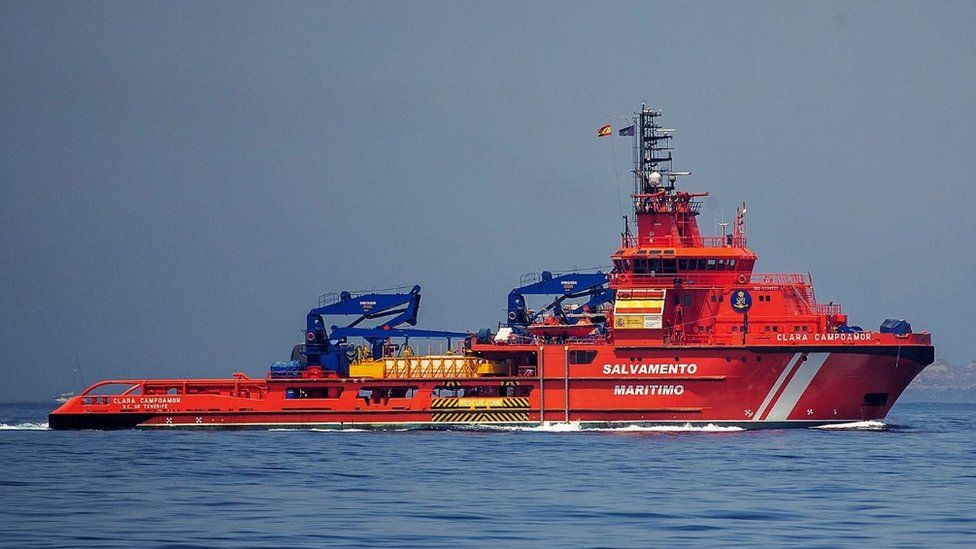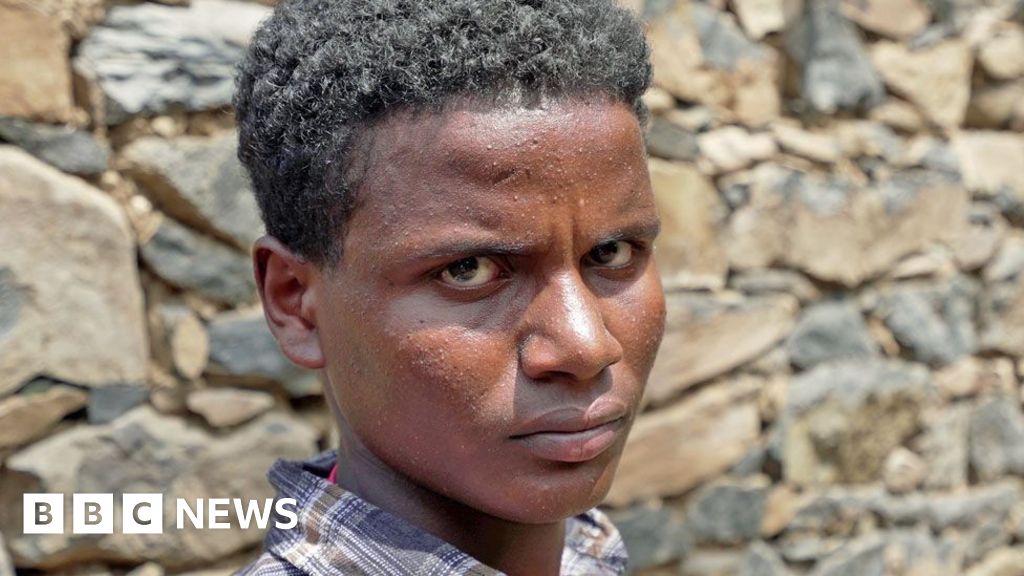ARTICLE AD BOX
 Image source, Salvamento Maritimo/Facebook
Image source, Salvamento Maritimo/Facebook
Spanish maritime rescuers have spent days looking for the small Senegalese boat
Spanish rescuers are searching waters off the Canary Islands for a boat carrying at least 200 African migrants who went missing more than a week ago.
The aid group Walking Borders says the fishing boat sailed from Kafountine, a coastal town in southern Senegal that is roughly 1,700km (1,057 miles) from Tenerife.
The group says many children are on board, Spain's Efe news agency reports.
Two similar boats carrying dozens more people are also said to be missing.
The boat carrying about 200 people left Kafountine on 27 June, heading for the Canary Islands.
Spain's maritime rescue service told Efe that a plane had joined the search.
There are few details about the other two boats. Reuters news agency quoted Helena Maleno of Walking Borders as saying that one has about 65 people on board, the other up to 60, which would bring the total number of people missing across the three boats to more than 300.
The news comes just weeks after Europe saw one of its worst Mediterranean migrant shipwrecks, when an overcrowded trawler sank off the Greek coast.
At least 78 people were confirmed drowned, but the UN reported that up to 500 were still missing.
The voyage from West Africa to the Canary Islands is among the most dangerous routes for migrants, not least because they usually sail in simple dugout fishing boats that are easily tossed by powerful Atlantic currents.
Last year at least 559 people died at sea attempting to reach the Spanish islands, the UN's International Organisation for Migration (IOM) says. The death toll for 2021 was 1,126.
The IOM quotes Spain's Interior Ministry as saying 15,682 people arrived irregularly in the Canary Islands in 2022, a decrease of 30% compared to 2021.
"Despite the year-to-year decrease, flows along this dangerous route since 2020 remain high compared to prior years," the IOM says.

 1 year ago
16
1 year ago
16








 English (US)
English (US)